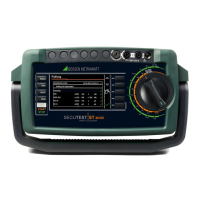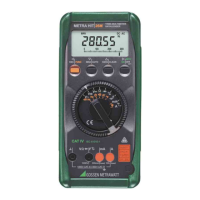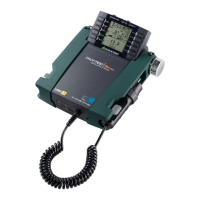60 GMC-I Messtechnik GmbH
– The fuse for the test socket’s L
conductor has blown (fuse link 2).
➭ Disconnect the test instrument
from the mains and inspect the
fuses next to the SECUTEST’s
mains connection.
– The fuse for the test socket’s N
conductor has blown (fuse link 1).
➭ Disconnect the test instrument
from the mains and inspect the
fuses next to the SECUTEST’s
mains connection.
– One of the two fuses for the test
socket has blown (fuse link 1 or 2).
➭ Disconnect the test instrument
from the mains and inspect the
fuses next to the SECUTEST’s
mains connection.
– A short-circuit has been detected
at the test socket between L/N and
PE.
➭ Determine whether or not the de-
vice under test is defective. Repeat
the visual inspection.
– A short-circuit has been detected
at the test socket between L and
N.
➭ Determine whether or not the de-
vice under test is defective.
➭ In the case of DUTs which are in-
tended for operation at an outlet
that’s protected with a 16 A fuse, a
short-circuit may be detected
under certain circumstances if, for
example, they include a PTC resis-
tor (e.g. large floodlights). Be sure
to use a 3-phase test adapter in
order to test devices of this sort
(e.g. the AT3-IIIE).
➭ You can deactivate this short-cir-
cuit test in the sequence parame-
ters at your own risk.
Error Messages Possible Causes Corrective Measures

